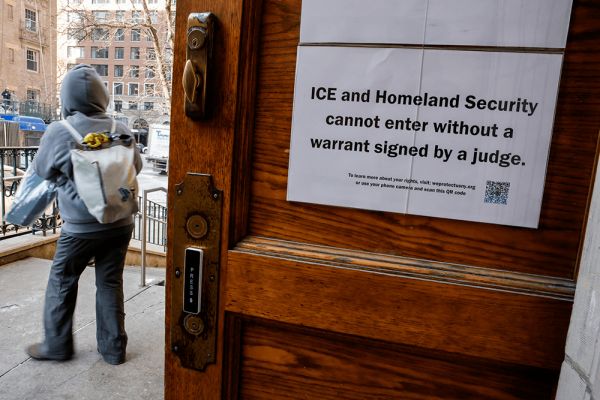Editor's note: This review contains spoilers for the documentary series Murder Among the Mormons.
Where the particularly eclectic Venn diagram of true crime enthusiasm and religious history nerdery overlap, you’ll find your binge-worthy streaming recommendation for the weekend: Netflix’s compelling new limited series, Murder Among the Mormons.
The three-episode Murder Among the Mormons, directed by Napoleon Dynamite creator Jared Hess, and Tyler Measom, both of whom were reared in the Mormon faith, tells the story of a spate of pipe bombings in 1985 that left two pillars of Salt Lake City’s Mormon community dead, revealed a third as both a murderer and one of the most prolific forgers of historical documents in U.S. history, and threatened to rock the foundations of one of the fastest growing and most affluent religious groups in the world: The Church of Jesus Christ of Latter-day Saints.
Told in campy reenactments, archival footage, and contemporary interviews with key players, Murder Among the Mormons introduces us to Mark Hofmann. In the 1980s, Hofmann was perhaps the world’s premiere dealer of Mormon antiquities, including the so-called “White Salamander Letter,” a document supposedly written by a contemporary of LDS founder Joseph Smith that claimed a magical white salamander — not the embodied Angel Moroni — revealed the divine message to Smith, which he translated and transcribed into the Book of Mormon. The salamander claim and others contained in the letter Hofmann “discovered” presented serious challenges to the foundation story of the Mormon faith.
Other contemporaneous documents, as well as outside experts, supposedly authenticated the Salamander letter but those documents later turned out to be elaborate forgeries made by Hofmann himself.
In the span of less than a decade, Hofmann produced hundreds of forged historical documents, including a poem by Emily Dickinson and the signatures of such notable figures as George Washington, Mark Twain, Betsy Ross, and Abraham Lincoln. He created forgeries to legitimize other forgeries, charging and spending hundreds of thousands of dollars to buy and sell the real and the fake. The unwieldy Ponzi scheme eventually came crashing down. Deep in debt and with his labyrinth of lies on the verge of being exposed, Hofmann built three pipe bombs. He used one to kill Steven Christensen, an investor who had threatened to expose him to police and church officials. Hofmann placed the second bomb at the home of Christensen’s business partner, where it was discovered by the man’s wife, Kathy Sheets, who died instantly in the explosion. The following day, a third pipe bomb exploded in Hofmann’s car while he was driving through downtown Salt Lake City, nearly killing him. Authorities put together the pieces of Hofmann’s elaborate deceptions while he lay in hospital recovering from his self-inflicted injuries.
How the series chronicles Hofmann’s meteoric rise and dramatic fall from grace in the first two episodes is riveting, but what makes all of it rise above the crowded true-crime field is what happens in its third act where investigators, friends, and family members try to explain the inexplicable: Why did he do it?
Hofmann’s deceptions, while similar in some ways to infamous forger Lee Israel’s crimes as recounted in the 2018 feature film Can You Ever Forgive Me?, are far more nefarious, and not only because of the homicidal turn. Israel forged documents from literary history seemingly in a moment of desperation; after she was caught, she appeared to be somewhat remorseful for her wrongdoings.
What motivated Hofmann, as told in Murder Among the Mormons, is rooted in an effort to manipulate people using the very nature of belief.
Hofmann appeared to be living an idealized Mormon life, but that, too, was a forgery, according to the testimony of former close associates who appear in the films. While Hofmann admitted privately to having lost his faith by the time he was 14, he spent a couple of years as a young adult living in Bristol, U.K., as a missionary of the Church of Jesus Christ of Latter-day Saints. It was during this mission that he first encountered antiquarian books and documents about the early days of the church, including some texts that were deeply critical of the “new” American religion at the time of its founding.
One reenactment scene, set in a bookstore in England, reminds me of a conversation I had in the antiquarian section of a religious bookstore in England when I was 17 and spending the summer miming on the streets of London for an evangelical Christian “teen missions” organization. One of my fellow “mimes for the Lord” worried about having a crisis of faith after reading something in an old biblical concordance that challenged a seemingly minor point in his interpretation of a key Christian text. “If that part isn’t true,” I recall the earnest young man confiding with palpable terror in his eyes, “then all the rest of it just falls apart. If that isn’t true, then none of it is.”
Hofmann seemed to be motivated by a desire to cause others to have crises of faith by using the forgeries to plant seeds of doubt about Mormon teaching and history. In the process, he did at least as much damage in the lives of friends and family through the deception of his life — appearing to be a God-fearing, devout Mormon family man devoted to a life of faith when in fact he was a murderous, conniving sociopath who used people’s beliefs against them.
In one of the most poignant scenes in the film, Alvin Rust, the Mormon owner of a small, rare coin business who Hofmann befriended and then bilked out of thousands of dollars, appears more broken-hearted than angry as he recounts his story
“Hofmann — that was all I could think about,” Rust says. “All of a sudden it came to me: He’s destroyed you financially but don’t let him destroy you otherwise.”
Rust phoned Hofmann’s father. “I said, ‘I want you to know I’m not going to hate your son. I’m not going to understand because I don’t. But would you tell him that I forgive him and I’m going on with my life.’ And from that moment on, my life changed,” Rust says, his voice cracking with emotion. “And I went on.”
More people lose their faith because of the actions of other people, not because something they believe could be proven or disproven by documents or reason. Faith, the Bible says, is the substance of “things hoped for” and the “evidence of things not seen.”
And true faith, it would seem, is much stronger than the best forgery or the worst deception.
Got something to say about what you're reading? We value your feedback!







